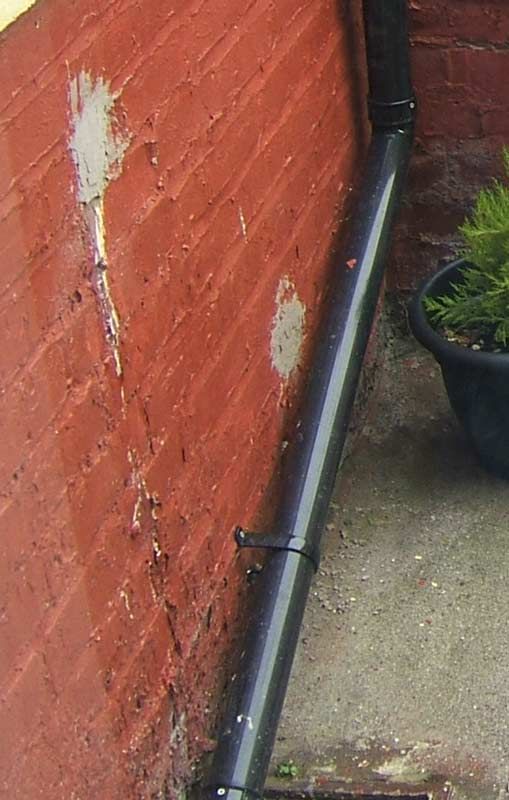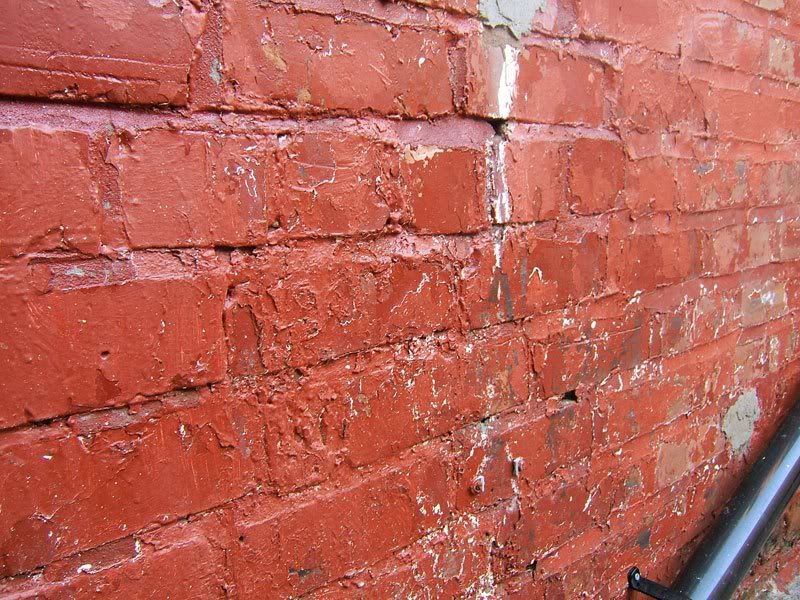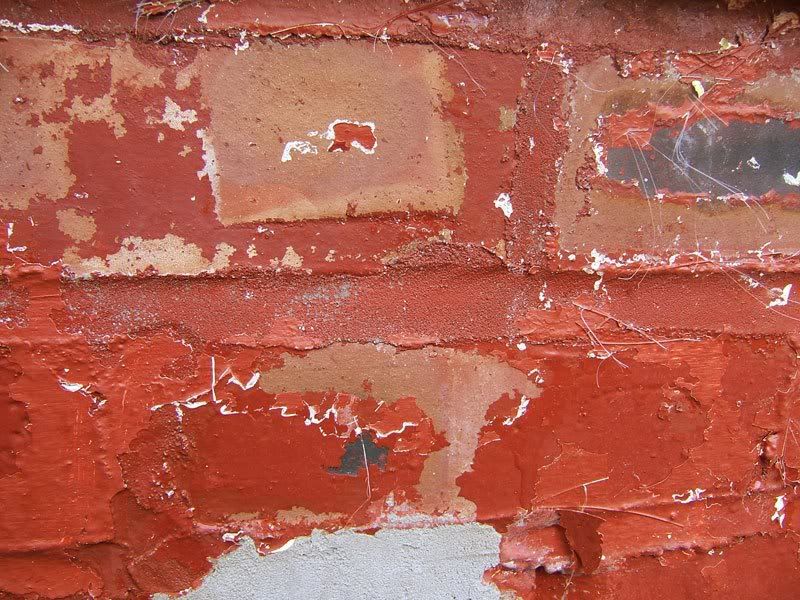I am preparing exterior walls prior to painting with masonary paint and would appreciate some advice on best way to proceed.
It looks like the brickwork overpainted with red emulsion paint this was very flaky and peeled. Underneath this is red oil based (I think!).
The cream wall I assume to be masonary paint over render. In quite a few areas this had bubbled and in some cases come away completely. I have now pressure washed the whole area and removed most of the red emulsion and the bubbled areas on the cream wall - now looks very patchy .
.
In the area marked A the wall has been coated with something that I can only describe as looking like fibreglass strands - this is very rough looking.

I am unsure now of the best way to proceed to prepare for painting with masonary paint so have a few questions
1. Area A. I intend to use a wire brush in angle grinder to smooth the surface prior to painting. Looking at the masonary paint manufacturers recommendations it is stated that these paints not suitable for fletton or common brick - not sure how I can tell what the brick type is. Therefore is their any product that should be used first e.g. some form of primer?
2. Area B. After pressure washing and a little scraping much of the original area remains and looks to be ok i.e. still on the wall . Can I get away with just painting over the exposed render then coating the whole wall?
. Can I get away with just painting over the exposed render then coating the whole wall?
Should a primer be used on the bare areas?
3. Finally down to the choice of materials. I have been thinking either Sandtex or Dulux masonary paint and need to make a decision on either smooth or textured (existing finish). Will one or the other give a longer lasting finish.
Any advice and suggestions please
It looks like the brickwork overpainted with red emulsion paint this was very flaky and peeled. Underneath this is red oil based (I think!).
The cream wall I assume to be masonary paint over render. In quite a few areas this had bubbled and in some cases come away completely. I have now pressure washed the whole area and removed most of the red emulsion and the bubbled areas on the cream wall - now looks very patchy
In the area marked A the wall has been coated with something that I can only describe as looking like fibreglass strands - this is very rough looking.

I am unsure now of the best way to proceed to prepare for painting with masonary paint so have a few questions
1. Area A. I intend to use a wire brush in angle grinder to smooth the surface prior to painting. Looking at the masonary paint manufacturers recommendations it is stated that these paints not suitable for fletton or common brick - not sure how I can tell what the brick type is. Therefore is their any product that should be used first e.g. some form of primer?
2. Area B. After pressure washing and a little scraping much of the original area remains and looks to be ok i.e. still on the wall
Should a primer be used on the bare areas?
3. Finally down to the choice of materials. I have been thinking either Sandtex or Dulux masonary paint and need to make a decision on either smooth or textured (existing finish). Will one or the other give a longer lasting finish.
Any advice and suggestions please





